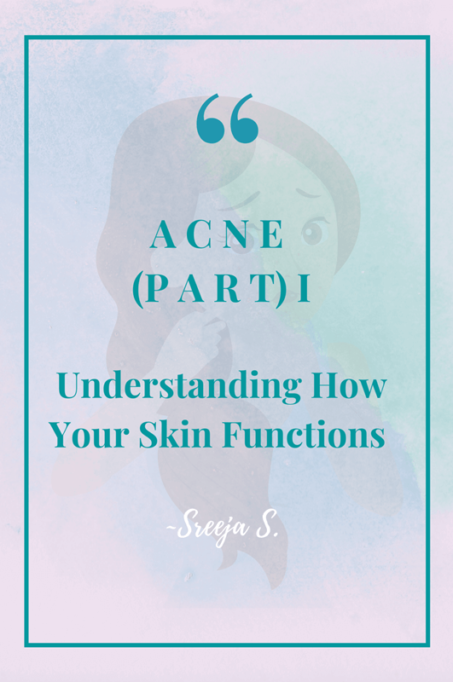Acne is hardly a stranger to anyone reading this post here- I will give you a minute to think about all the times you have used makeup to hide those pesky pimples and nasty scars. The valuable time that you have spent online, searching for the ultimate cure of all your acne woes.
While you may have tried (I am guilty too) to cure your acne by following a healthy skin routine, using some bizarre method from YouTube, or by slathering oil-free, anti-acne products all over your face, it is never too late to find the truth behind the vicious recurring cycle of acne.
Now before you understand acne, you need to understand what are the functions of the skin.
When it comes to our skin and acne skincare routine, three things are very important –
Skin barrier, Skin’s acid mantle, and Skin microbiome (BAM).
Skin Barrier – The skin barrier is the outermost layer of your skin’s surface. It consists of cells and lipids (fats). Also known as the permeability barrier, moisture barrier, or lipid barrier, the skin barrier is responsible for making sure that essential water and electrolytes don’t evaporate from the skin.
It also serves as a protective shield against harmful microorganisms by producing antimicrobial peptides and proteins. On top of that, the skin barrier helps sustain the skin’s immunity and regulates inflammation. So any damage to your skin barrier immediately results in reactive and inflamed skin.
Skin’s acid mantle or pH levels – It refers to your skin’s pH level through which it protects itself from environmental pollutants, harmful bacteria, and moisture loss. The acid mantle comprises sebum (your skin’s natural oil), sweat, and dead skin cells. Now the ideal acid mantle of your skin should be slightly more acidic so that these harmful and damaging contaminants from the environment do not penetrate your skin. It is very important to protect the acid mantle of your skin because a damaged acid mantle can lead to oily, dehydrated, sensitive, and acne-prone skin.
Skin Microbiome – Our skin is the largest organ of our body and the one that bears the most damage. It hosts bacteria and dead skin cells. The skin microbiome is a good bacteria that protect us against infection by crowding out the overgrowth of pathogenic organisms. It also aids in wound healing, minimizes oxidative stress, and keeps our skin plump and moist. Now an important thing to remember here is that our good bacteria prefer a slightly acidic environment and grow only when the skin pH is around 5.
Now having said all of the above, how does it translate to your skin and your skincare routine for acne scars?
BAM is like your mind, body, and soul. If anyone of them fails to function properly, you will collapse. Similarly, if any one of the elements of your skin gets imbalanced, your skin will become sensitized and more prone to inflammation.
But we live in the world of ten-step K routine, exercising regularly and eating healthy so how does our BAM get imbalanced?
Check out my Acne Part II for that.
Love
Sreeja S
